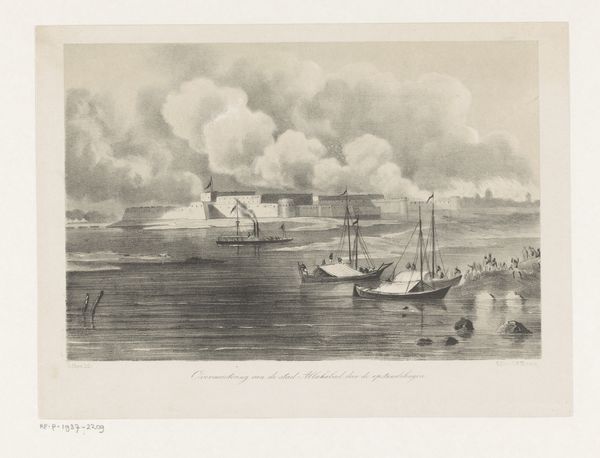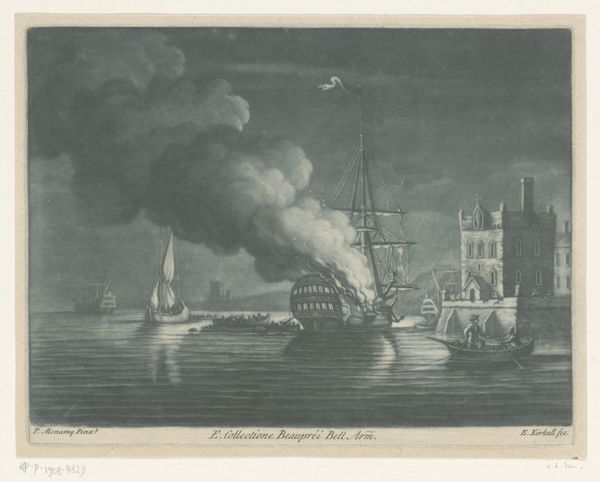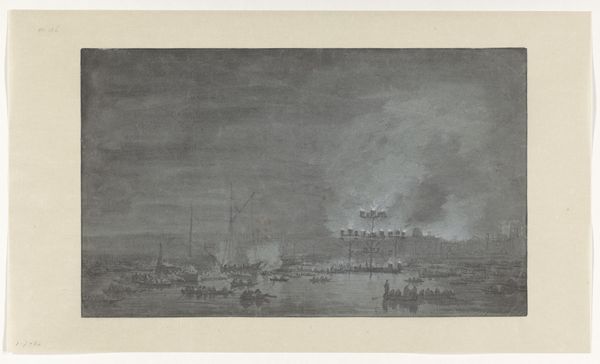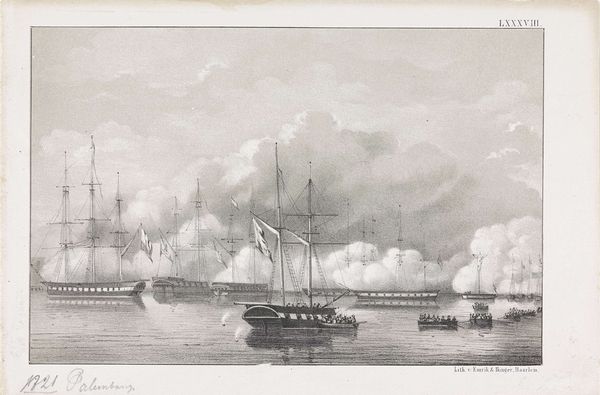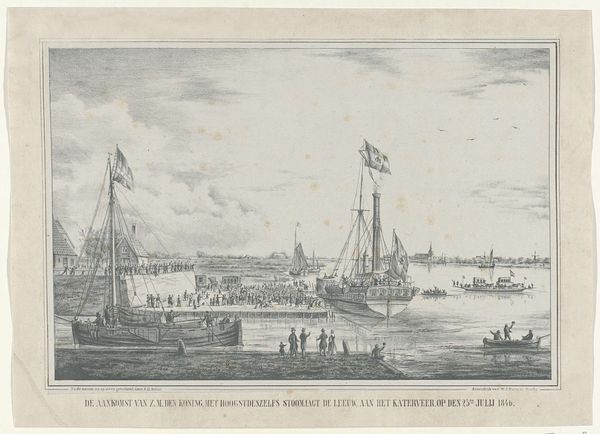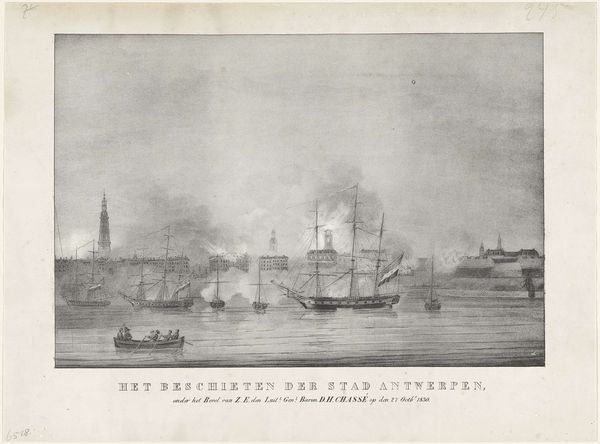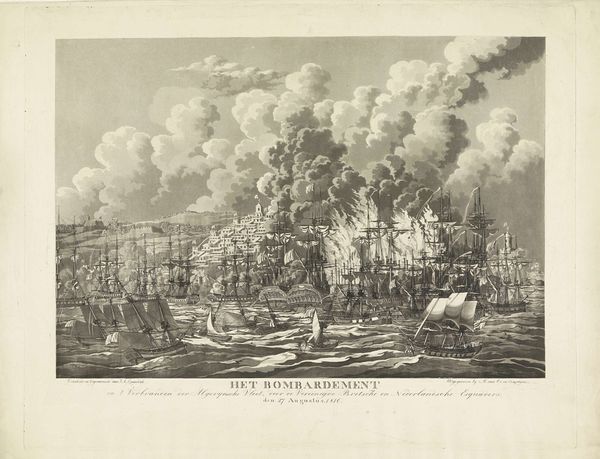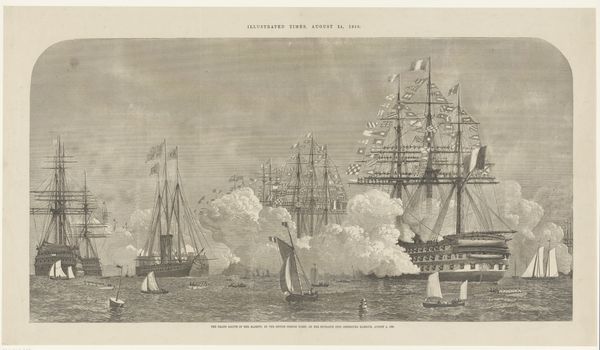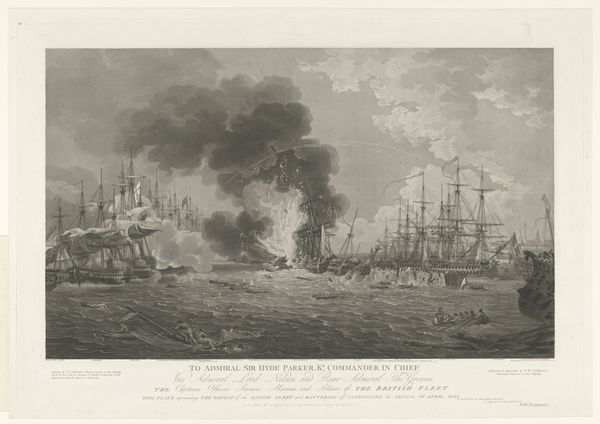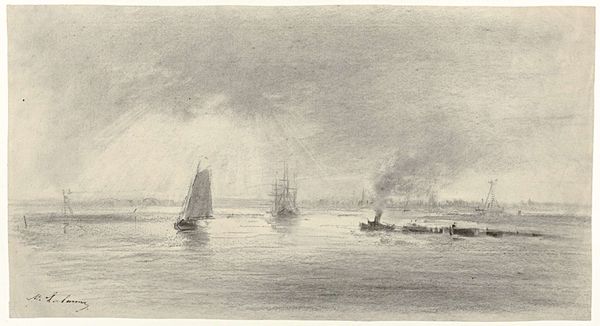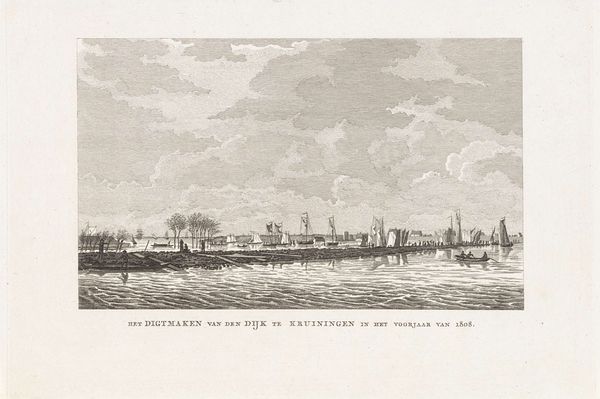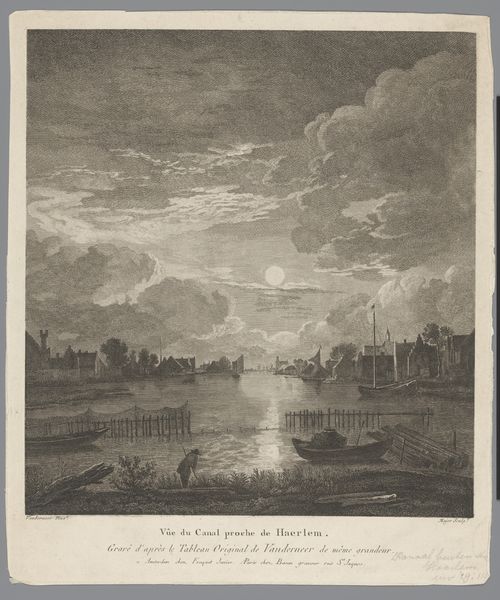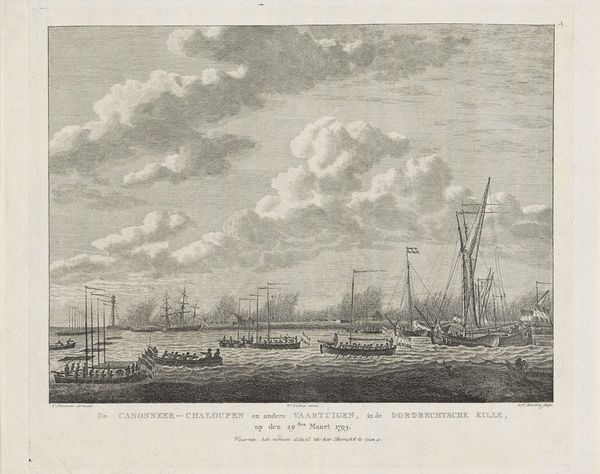
Gezigt van den Brand en Beschieten der stad Antwerpen op den 27 october 1830, onder het bevel van Z. Exc.e Luit.t Gener.l Baron D.H. Chassé; met de positie van Z.M. Smaldeel onder kommando van den Kapit.n ter Zee, Jonkh.r J.E. Lewe van Aduard 1830 - 1831
0:00
0:00
lithograph, print
#
aged paper
#
lithograph
# print
#
landscape
#
pencil drawing
#
romanticism
#
cityscape
#
history-painting
Dimensions: height 638 mm, width 1003 mm
Copyright: Rijks Museum: Open Domain
Editor: So, this lithograph, “Gezigt van den Brand en Beschieten der stad Antwerpen…”, created around 1830 by Willem Hendrik Hoogkamer, depicts the shelling of Antwerp. It’s currently held at the Rijksmuseum. It has such a melancholic atmosphere despite depicting something violent. All those ships silently watching. What do you see in this piece? Curator: It certainly holds a sense of drama, doesn't it? Beyond the visual spectacle, I'm struck by the piece's attempt to capture a specific historical moment, laden with political and emotional weight. It seems almost romantic in its depiction of such an event, doesn't it? As though trying to find beauty amidst the chaos. Do you see any evidence of this Romanticism, this... idealizing, perhaps? Editor: I see the dramatic sky, almost theatrical in its darkness and swirling clouds, hinting at Romanticism. It seems to amplify the gravity of the event, almost turning the city into a stage for a grand, tragic performance. Curator: Precisely! It begs the question, doesn't it? Is the artist simply recording the event, or is he using it as a vehicle to express a particular viewpoint? Do you think this image seeks to celebrate, or to mourn? Editor: It’s a bit ambiguous, actually. I thought I perceived some neutrality but seeing the deliberate composition, maybe it expresses both devastation and resilience? The artist’s hand seems to guide us to observe not just destruction, but also endurance. Curator: It's that duality, that tension, which makes it truly fascinating, wouldn't you agree? It is about destruction but a form of documentation as well, wouldn't you agree? Thank you for making me consider this piece on a new, more interesting plane. Editor: Absolutely, I came away considering the artist's intention and it also pushed me to research the historic context further, which is rewarding!
Comments
No comments
Be the first to comment and join the conversation on the ultimate creative platform.

